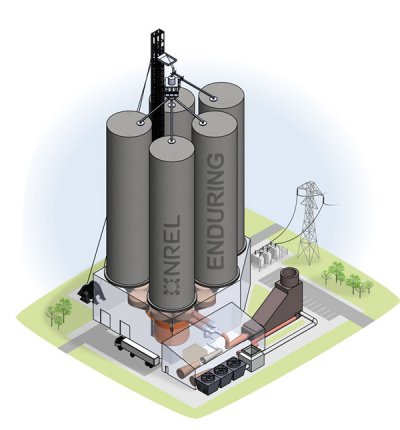Batteries store energy. They typically operate be generating energy through electrochemical reactions. These include non-rechargeable batteries, such as lead-acid batteries, and rechargeable nickel-cadmium and lithium-ion batteries.
These can pose environmental issues and require significant resources: energy to mine and manufacture; mineral resources, which may be relatively costly or limited in supply; and disposal, to prevent the materials from damaging soil and water.
But new technologies are coming along quickly. A gravity-based battery operates using gravity instead of electrochemistry. Electricity is generated when a heavy load is released, and consumed with a heavy load is lifted. Hydroelectric systems have been in use for some time that operate on this principle: water flowing downhill (for example, from a reservoir) spins turbines that generate electricity. When excess energy is available, energy is consumed when the water is returned to the higher altitude (such as a reservoir).
In 2022, scientists from Austria's International Institute of Applied Systems Analysis (IIASA) proposed the use of gravity batteries, specifically mine-based Underground Gravity Energy Storage (UGES) systems. These operate using sand, which is not an environmental threat and is plentiful. This technology operates along the lines of a hydroelectric dam by generating energy going down an abandoned mine shaft, using a series of electric motor/generator units along both sides of the shaft. Regenerative braking on the way down the shaft generates electricity.
The biggest problem with renewable energy is that when the sunlight or wind goes away, so does the power. You need batteries to store excess power for those times, but not all "batteries" have to be chemical: just use gravity!
When excess energy is available, the motors operate to haul the sand to the surface. This permits the system to take advantage of excess energy generated by renewable energy.
Using abandoned or exhausted mines to store energy in this way gives a new life to the abandoned shafts and provides jobs in nearby communities, typically hit hard when a mine closes. The abandoned mines already have a lot of infrastructure built in, with safe mine construction and energy for elevators and other tools of mining. With existing connections to the power grid, we can use gravity batteries in mines to store energy and release it on demand to the grid.

